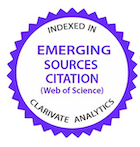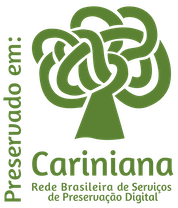Perfil hematológico de ovelhas Santa Inês suplementadas a pasto no terço final de gestação e no pós-parto
DOI:
https://doi.org/10.1590/1089-6891v16i327573Palavras-chave:
Hemoglobina, Neutrófilos, Ovinos Nativos, Suplementação.Resumo
Objetivou-se avaliar a influência do nível de suplementação com concentrado sobre o perfil hematológico de ovelhas Santa Inês no terço final da gestação e puerpério, assim como dos cordeiros. Utilizaram-se onze ovelhas, aos 75 últimos dias de gestação e nos primeiros 75 dias de lactação e oito cordeiros progênie das ovelhas, distribuídas em delineamento inteiramente casualizado em arranjo de parcelas subdivididas no tempo. As amostras de sangue foram colhidas sempre pela manhã a cada 14 dias. A suplementação não afetou (P>0,05) o eritrograma e o leucograma dos animais e os componentes sanguíneos avaliados encontraram-se dentro do intervalo de referência para a espécie. A categoria animal influenciou (P<0,05) os valores de hemácias, observando-se os maiores valores (11,72 x 106/µL) para os cordeiros. Os cordeiros apresentaram valores inferiores (3073,3/µL) de neutrófilos em comparação com as ovelhas, seja na gestação (4957,6/µL) ou no puerpério (4067,3/µL), que não diferiram entre si (P>0,05). Já na contagem de linfócitos, os valores encontrados nos cordeiros (2858,8/µL) foram semelhantes aos das fêmeas gestantes (2982,0/µL); as fêmeas em lactação (4119,8/µL) apresentaram os maiores valores. A suplementação com concentrado (0,5% do PV) no pré e pós-parto não altera o perfil eritrocitário e leucocitário de ovelhas Santa Inês, sendo as maiores diferenças observadas entre as ovelhas das duas categorias e os cordeiros.
Palavras–chave: hemograma; neutrófilos; ovinos nativos; suplementação.
Downloads
Publicado
Como Citar
Edição
Seção
Licença
Copyright (c) 2015 Ciência Animal Brasileira / Brazilian Animal Science

Este trabalho está licenciado sob uma licença Creative Commons Attribution 4.0 International License.
Autores que publicam nesta revista concordam com os seguintes termos:
- Autores mantém os direitos autorais e concedem à revista o direito de primeira publicação, com o trabalho simultaneamente licenciado sob a Licença Creative Commons Attribution que permite o compartilhamento do trabalho com reconhecimento da autoria e publicação inicial nesta revista.
- Autores têm autorização para assumir contratos adicionais separadamente, para distribuição não-exclusiva da versão do trabalho publicada nesta revista (ex.: publicar em repositório institucional ou como capítulo de livro), com reconhecimento de autoria e publicação inicial nesta revista.
- Autores têm permissão e são estimulados a publicar e distribuir seu trabalho online (ex.: em repositórios institucionais ou na sua página pessoal) a qualquer ponto antes ou durante o processo editorial, já que isso pode gerar alterações produtivas, bem como aumentar o impacto e a citação do trabalho publicado (Veja O Efeito do Acesso Livre).






























